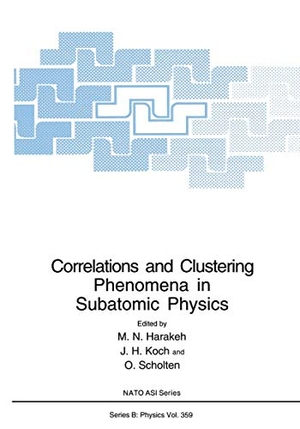Für statistische Zwecke und um bestmögliche Funktionalität zu bieten, speichert diese Website Cookies auf Ihrem Gerät. Das Speichern von Cookies kann in den Browser-Einstellungen deaktiviert werden. Wenn Sie die Website weiter nutzen, stimmen Sie der Verwendung von Cookies zu.
Cookie akzeptieren
Correlations and Clustering Phenomena in Subatomic Physics
- Springer US
- 2012
- Taschenbuch
- 280 Seiten
- ISBN 9781468413687
In many areas of physics, such as astrophysics, solid-state physics, nuclear physics and particle physics, a major outstanding problem is a better understanding of corre lation phenomena. While in most cases the average properties of a system are rather well understood, the correlations and the resulting clustering are poorly understood. They are reflections of the force mediating the interaction among the constituents and play essential roles in determining the structure of a physical system. At the largest scales, in astrophysics, it has recently been realized that there are huge voids in space and almost all matter is concentrated on filaments, raising interesting questions concerning the origin
Mehr
Weniger
zzgl. Versand
in Kürze